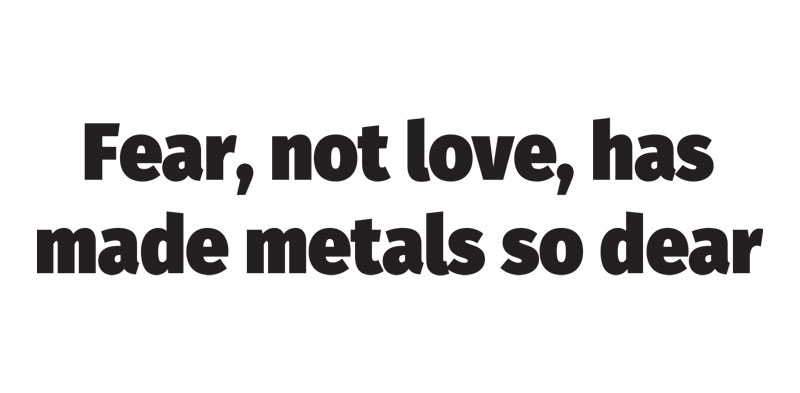Blitz Bureau
NEW DELHI: In times of turbulence, the allure of gold and silver shines brightest. But today’s metal mania may be less about strategic foresight and more about herd instinct, amplified by relentless media hype, algorithmic trading, and speculative fund flows that magnify momentum-driven moves.
The current rally in gold and silver is being hailed as a structural shift, signalling new strategic thinking across boardrooms. Yet beneath the dazzle lies a more sobering reality: unsustainable exuberance that could soon test investors, industries, and policymakers alike.
Driven by uncertainty rather than clarity, the surge reflects a world still searching for stable anchors amid shifting financial sands and policy crosswinds.
To begin with, precious metals are rising not because of robust fundamentals, but because of fear. A weakening dollar, geopolitical anxieties, and expectations of interest rate cuts have inflated safe-haven demand.
But if central banks delay easing or geopolitical risks ease, speculative positions could quickly unwind. History offers ample warning — past rallies in 2011 and 2020 ended with sharp corrections once monetary and political conditions normalised, leaving investors nursing losses and industries saddled with costly inventories. Even minor shifts in bond yields or inflation expectations could trigger swift reversals.
For silver, the so-called ‘industrial revolution’ narrative risks overreach. Yes, demand from solar panels, semiconductors, and EVs is strong, but substitution technologies are advancing rapidly.
Copper, aluminum, and graphene composites are already replacing silver in select applications. As prices climb, industries innovate to cut usage — undermining long-term demand forecasts. The much-touted supply deficit also deserves scrutiny: a sustained price rise will inevitably draw dormant mines back into production and boost recycling, easing shortages and moderating prices. Market equilibrium tends to reassert itself faster than enthusiasts expect.
In India, festive demand is a fickle driver — high prices can as easily dampen consumer enthusiasm as stoke it. Jewellers are already reporting shifts toward lighter designs and mixed alloys.
The notion that gold and silver are now ‘strategic assets’ for corporate treasuries may also be overstated; most firms lack the liquidity or mandate to hold volatile commodities on balance sheets, especially when working capital cycles remain tight and credit conditions unpredictable.
For investors, the promise of precious metals as hedges comes with caveats. Unlike equities or bonds, metals yield no income. Their returns hinge solely on price appreciation — vulnerable to global sentiment and policy surprises. The higher they climb, the thinner the margin for safety and the sharper the potential fall.
Industrial users face the toughest trade-offs. Rising input costs threaten competitiveness, especially for solar and electronics firms competing on razor-thin margins. Governments, too, may find green transition targets harder to fund if component costs spiral.
The current euphoria risks turning into complacency. By treating precious metals as panaceas for volatility and uncertainty, businesses may overlook more sustainable hedges — innovation, diversification, and productivity gains. Gold and silver can shine in moderation; as central pillars of strategy, they may glitter too much for comfort.



